

Max Davies
2025 Lexus NX450h+ F Sport review
5 Days Ago
The mildly-rejigged CX-30 range ushers in some new value-packed variants, including a sporty new Touring SP grade which could be the pick.

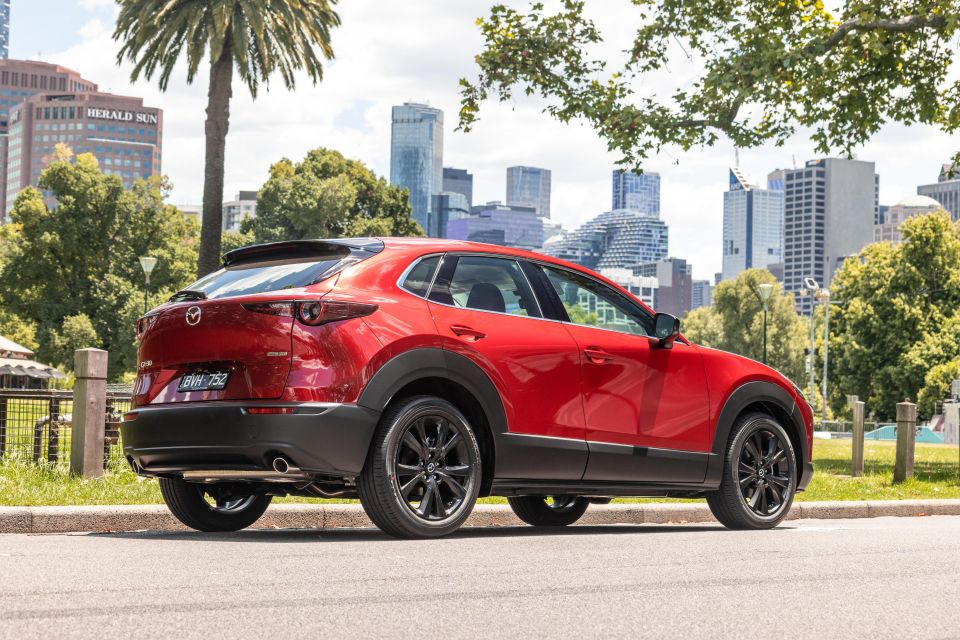

Quickly see how this car stacks up against its competition. Select any benchmark to see more details.
Where expert car reviews meet expert car buying – CarExpert gives you trusted advice, personalised service and real savings on your next new car.
The Mazda CX-30 is arguably one of the benchmarks in the mainstream small SUV segment, even challenging some premium players with its rich equipment list and quality design inside and out.
For 2022 the little Japanese crossover has been tweaked to include new trim levels, a new mild-hybrid engine option, more equipment in some variants, and new paint options.
Here on test we have the 2022 Mazda CX-30 G25 Touring SP, a new mid-range model that follows sporty models from other Mazdas over the past 12 months. The G25 signifies the larger and more desirable 2.5-litre petrol engine under the bonnet, and the ‘SP’ brings in-vogue black styling and trim enhancements.
So how does Mazda’s popular little crossover fare in 2022, and is the new Touring SP a top pick?
At $39,190 before on-road costs, the CX-30 G25 Touring SP FWD is almost smack back in the middle of the line-up, and is the second most-affordable variant to offer the 2.5-litre petrol engine.
2022 Mazda CX-30 pricing:
All prices exclude on-road costs

That positions it against numerous high-grade competitors across the Light and Small SUV segments.
Key rivals include
All prices exclude on-road costs unless specified
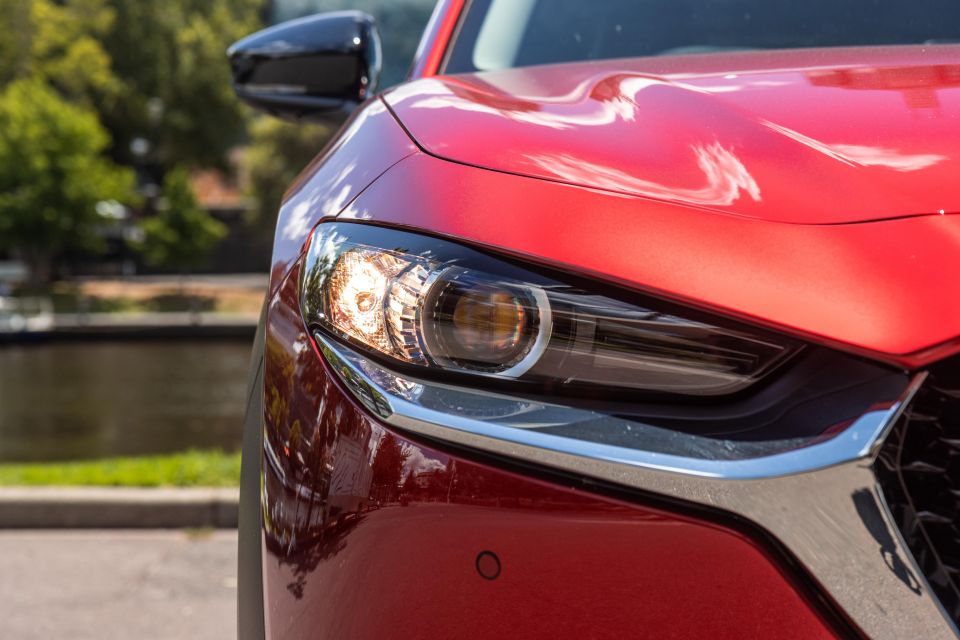

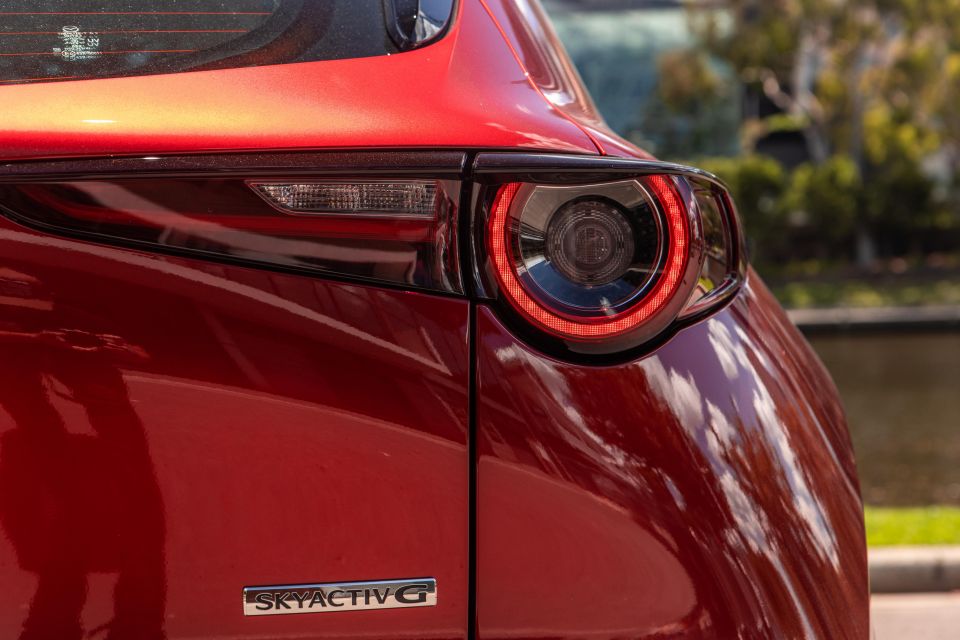
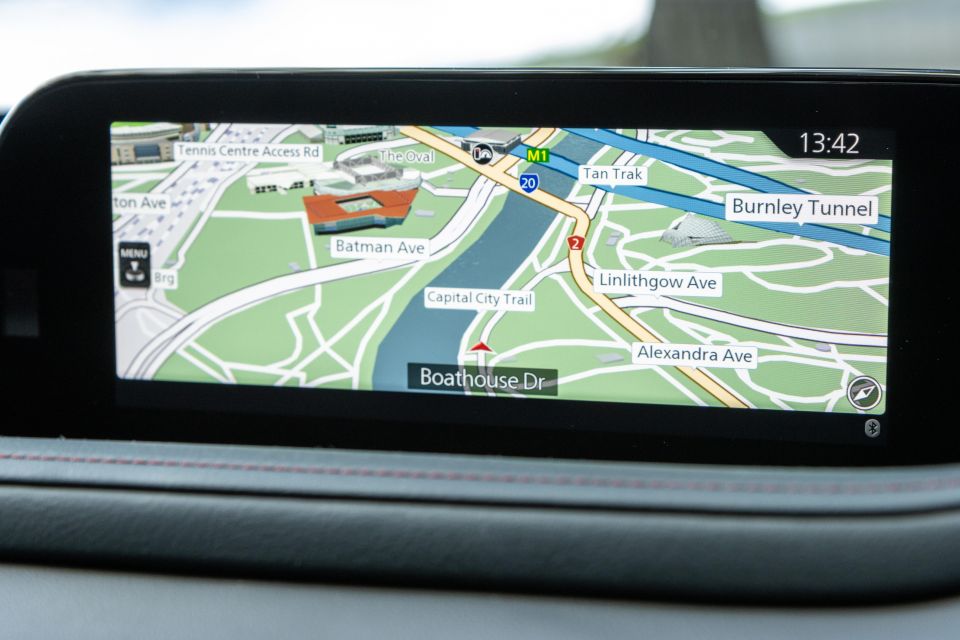
CX-30 Touring SP highlights:
That’s on top of the standard specification from lesser models, which includes:
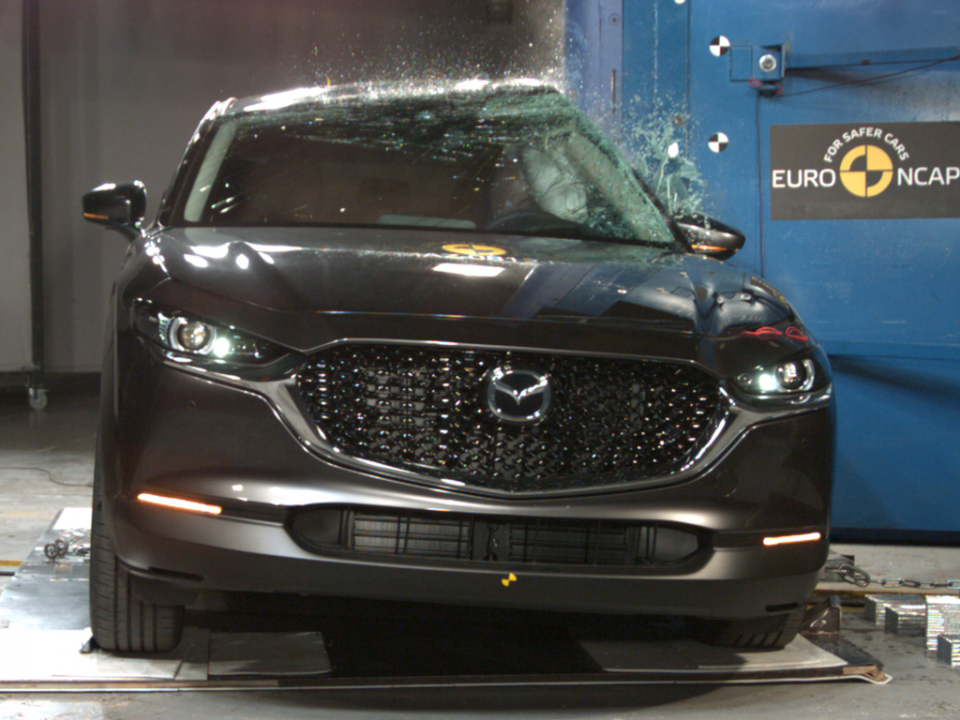
The Mazda CX-30 scored a five-star ANCAP safety rating when tested in 2019.
It scored an impressive 99 per cent for adult occupant protection, 88 per cent for child occupant protection, 80 per cent for vulnerable road user protection, and 76 per cent for safety assist.
All Mazda CX-30 models are fitted with:
The Vision Technology Package – standard on the Touring SP, optional on other variants – adds:
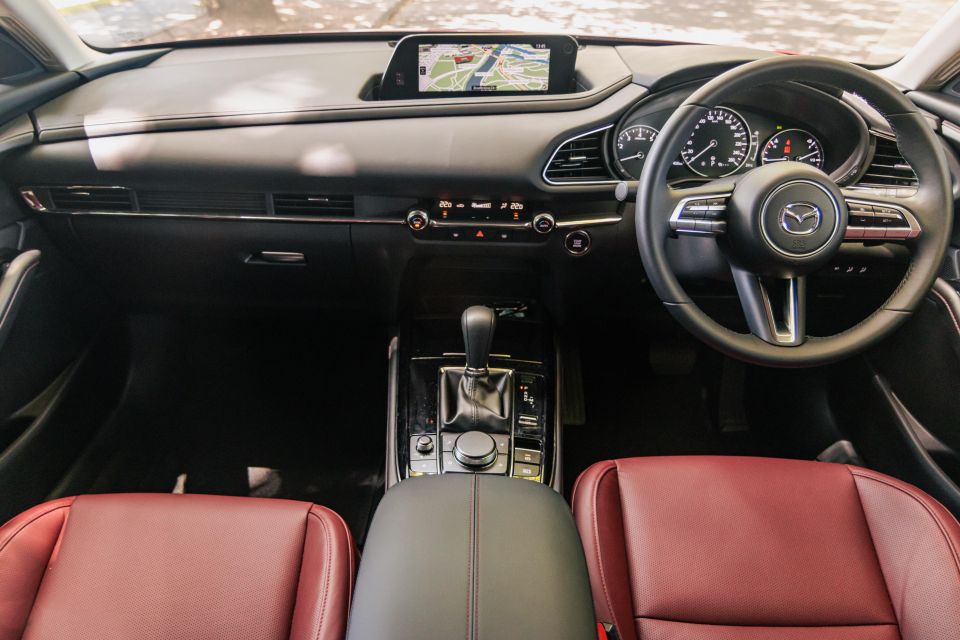
Rather lovely, I must say.
While the overall look and feel of the CX-30’s cabin is familiar given there’s been largely no changes since the nameplate’s launch a few years back, the Touring SP’s appointments brighten the vibe.
The burgundy leather upholstery exclusive to the Touring SP is a great upgrade, though it won’t be to all tastes. Perhaps it’s not the best match for our tester’s Soul Red Crystal paint, either.
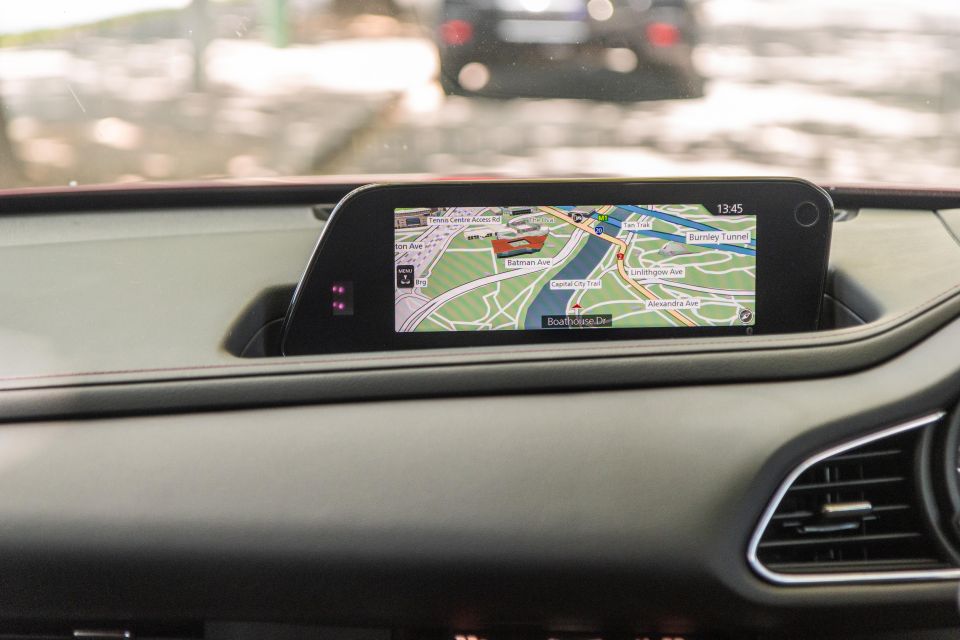
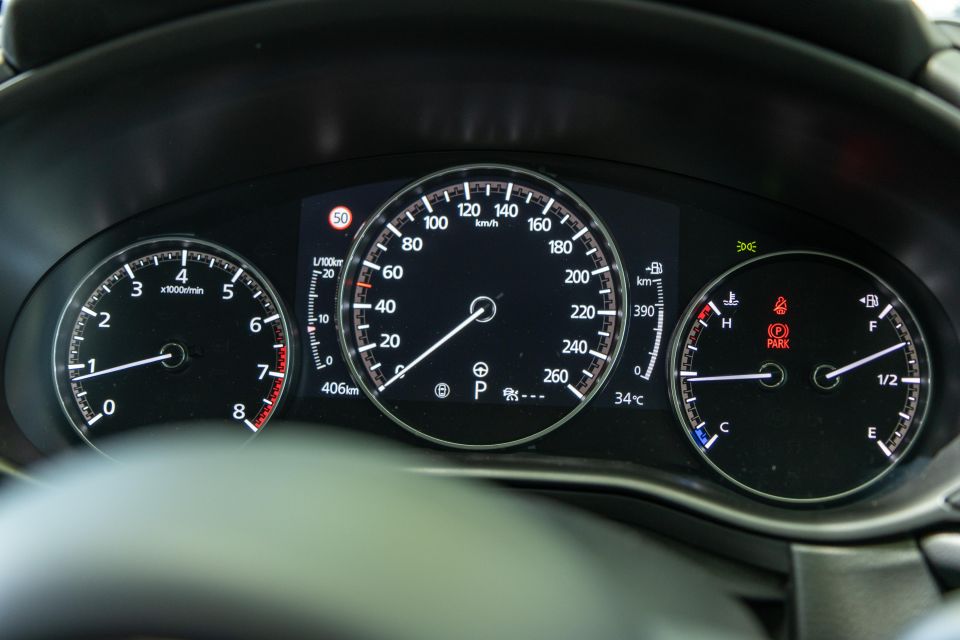
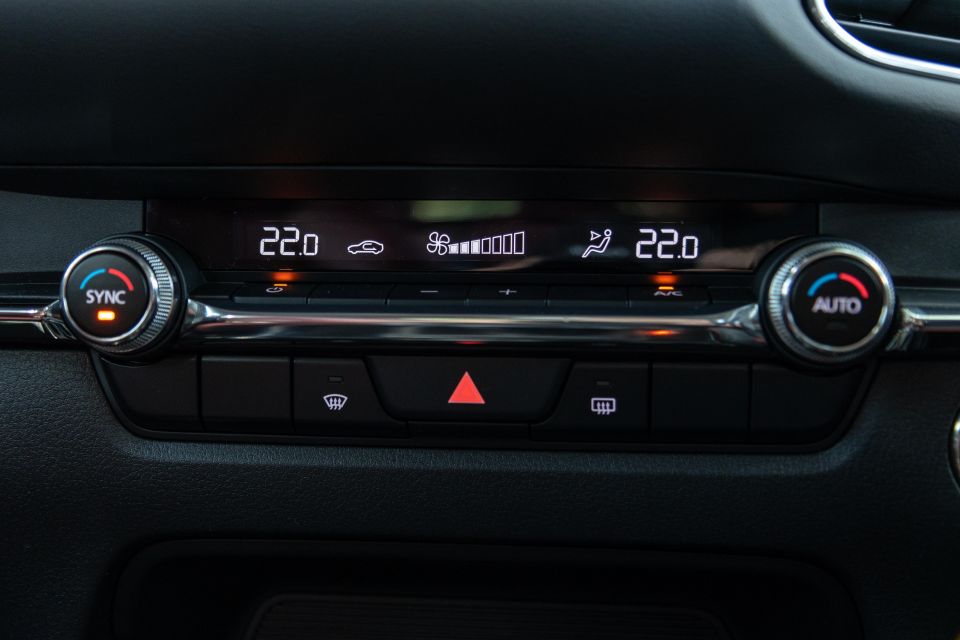

But the CX-30’s core interior strengths continue to make it a class benchmark for quality and ambience, with a high ratio of padded, leatherette surfaces on the dashboard and door trims, as well as supple touch points that easily bring the Mazda in line with (or mean it eclipses) premium badges.
I tend to liken the CX-30’s cabin to that of the Lexus UX, which is often considered a benchmark in the small premium SUV segment, but I’d argue the Mazda’s cabin is less cluttered and more comfortable.
The 8.8-inch Mazda Connect infotainment system still looks and feels fresh, though the rotary dial-only controls may be lamented by those used to touchscreen inputs. Likewise, the slim aspect ratio and recessed positioning mean there’s a steeper learning curve than maybe would be ideal.
Apple CarPlay worked fine via the standard wired connection (wireless would be nice), and the native system is good if not being a standout. Audio quality through the non-branded eight-speaker stereo is also good.
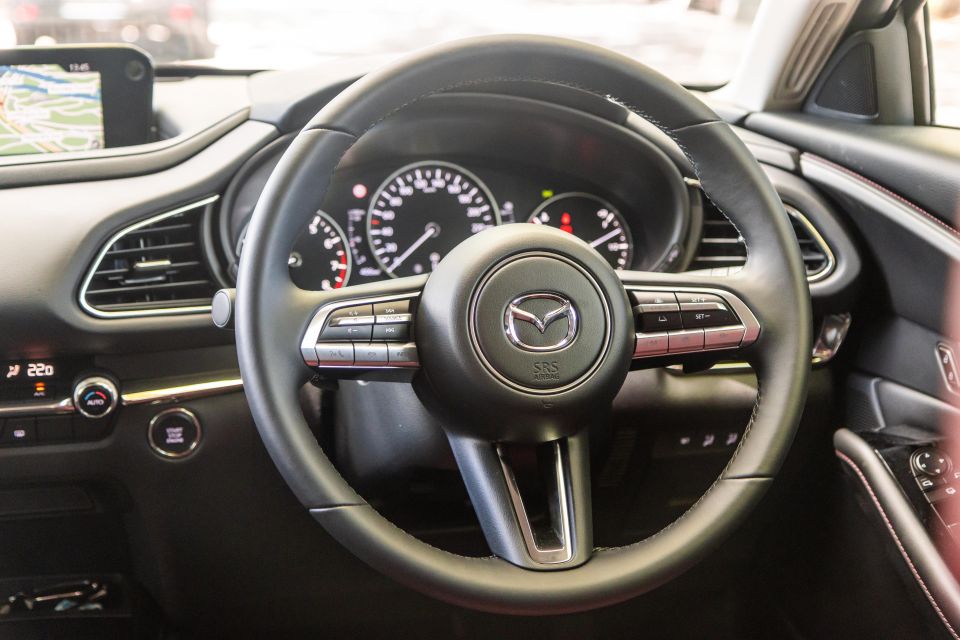
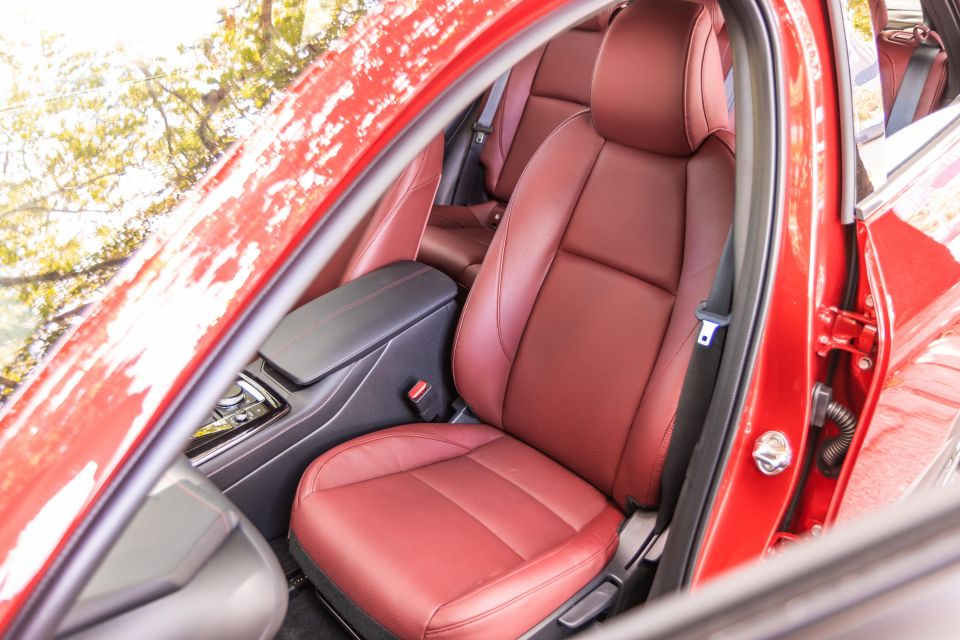
What I really really love, though, are the front seats and steering wheel.
Mazda went on and on at the CX-30 (and Mazda 3) launches about the scientific level of detail it put into engineering the seats to ensure long-distance comfort and maximum support. To this day, the CX-30 has some of the best seats in the business.
The big, round steering wheel is also a tactile delight. I personally am a big fan of the shape and rim thickness, and the simplicity of the small hub and symmetrical switchgear is all class.
Ahead of the driver, Mazda has gone partial, not fully-digital with the 7.0-inch supervision display which has a configurable virtual centre dial. It’s smooth, clean, and again classy.
Storage up front is good too. There’s a huge cubby under the centre armrest, big cupholders ahead of the shifter, a shelf to keep your phone, and decent sized door bins.
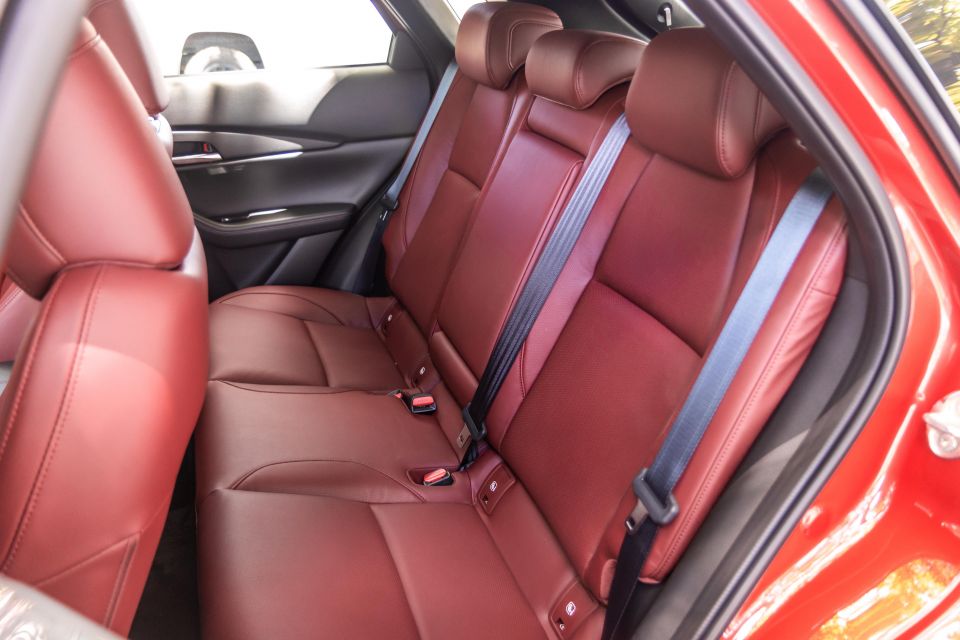

Row two isn’t quite as impressive as the front.
As is a common complaint amongst Mazda models, the rear accommodation isn’t as spacious as segment leaders. behind my driving position (I’m a little over 6’1) leg and knee room is tight for anyone over six foot.
The rising windowline at the rear also means it’s not as airy for kids, though the CX-30 lets more light in than say, a Toyota C-HR. ISOFIX and top-tether points feature, with the former easily accessible as you can see in the images.
Rear amenities include a fold-down centre armrest with cupholders, rear air vents, and a map pocket behind the front passenger seat. There are bottle holders in the doors, too.
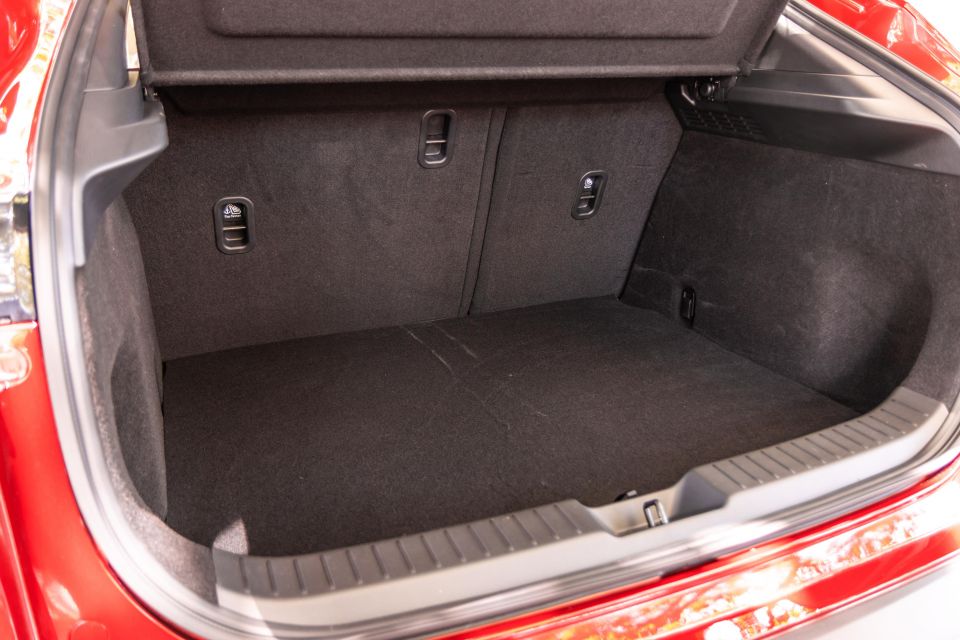
Mazda quotes a 317L boot behind the second row of seating, which is a handy 22L more than the related Mazda 3 Hatch, though still behind the bulk of the competition. The company doesn’t list a figure with the second row folded.
By comparison, the Kia Seltos offers 433L with five seats in use and 1393L in two-seat configuration, while the dimensionally smaller Honda HR-V (soon to be replaced) quotes 430L/1598L.
There’s also a space-saver spare wheel under the boot floor of the CX-30, where some rivals including the Kia offer full-size spares.
If you want an SUV with a Mazda badge but need a bit more cargo-carrying capability, the larger CX-5 offers 438L/1340L and can be had in one-up-from-base Maxx Sport specification with the same 2.5-litre petrol engine and front-wheel drive for $37,990 plus on-road costs.
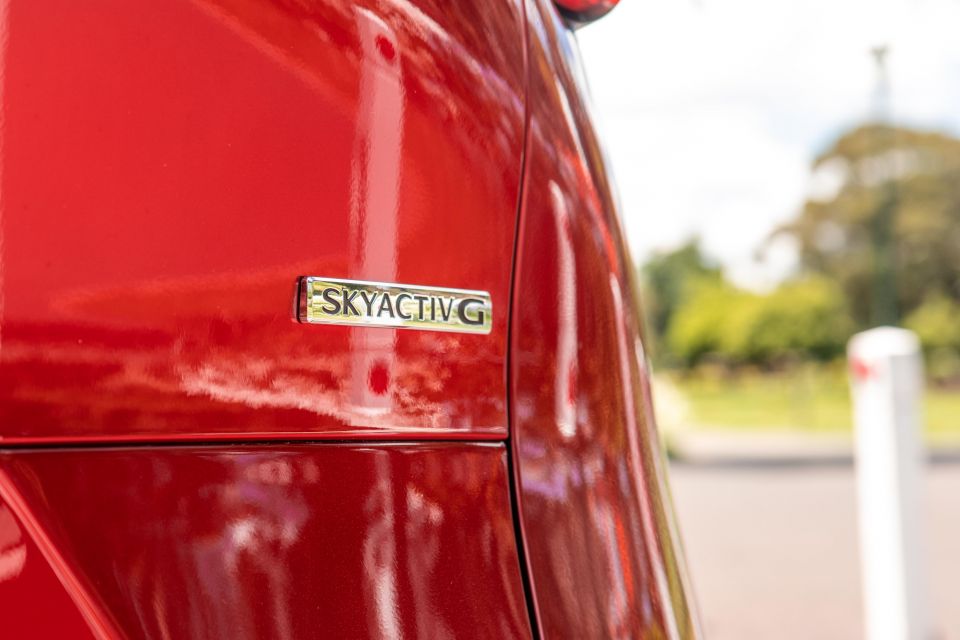
CX-30 models with a G25 badge feature a 2.5-litre naturally-aspirated four-cylinder petrol engine, with outputs quoted at 139kW (6000rpm) and 252Nm (4000rpm). Drive is sent to the front wheels through a six-speed auto in our tester, although all-wheel drive is available as an option.
The more affordable G20 Touring SP makes do with a smaller 2.0-litre atmo four with 114kW (6000rpm) and 200Nm (4000rpm). Personally, the extra $1500 for the bigger motor is a no-brainer.
Official fuel consumption for the G25 FWD is 6.6L/100km (claimed), with 91 RON regular unleaded approved for the 51L tank. Idle stop/start technology is fitted as standard, too.
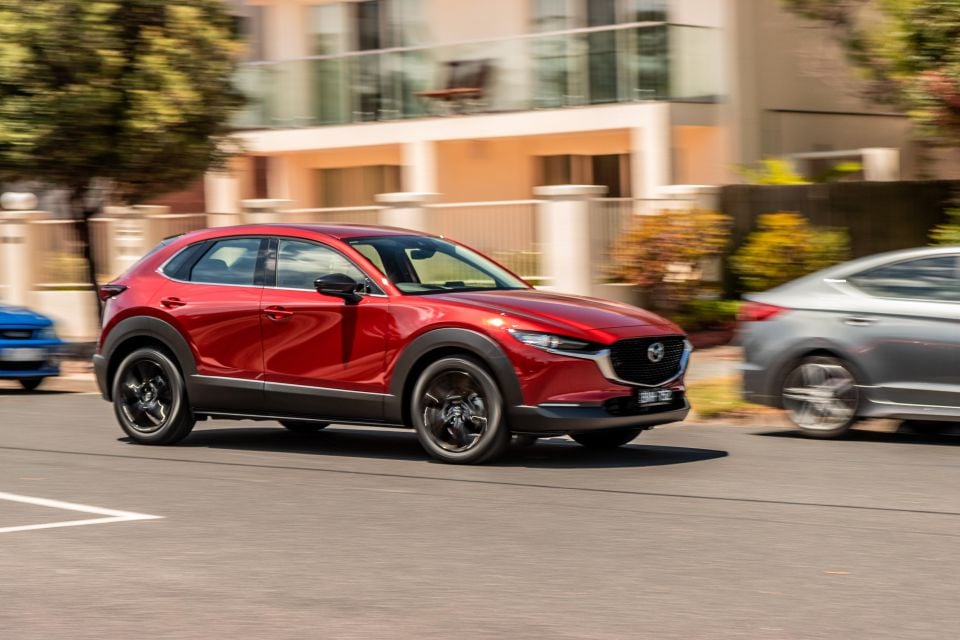
Most of my time in the CX-30 previously has been spent in lower-powered G20 models, as well as a stint in the X20 Astina with its compression-ignition Skyactiv-X petrol engine.
Just a couple of minutes into driving the G25 version, I knew which powertrain is my pick of the range.
In every way the 2.5-litre atmo four feels more muscular than its 2.0-litre siblings, while also being quieter in everyday driving as it doesn’t have to be worked as hard.
The powertrain is rev-happy and linear, which makes it a bit of fun in a more old-fashioned way, and gives the CX-30 a bit of character on the road unlike the occasionally anodyne daily performance of some turbocharged rivals.
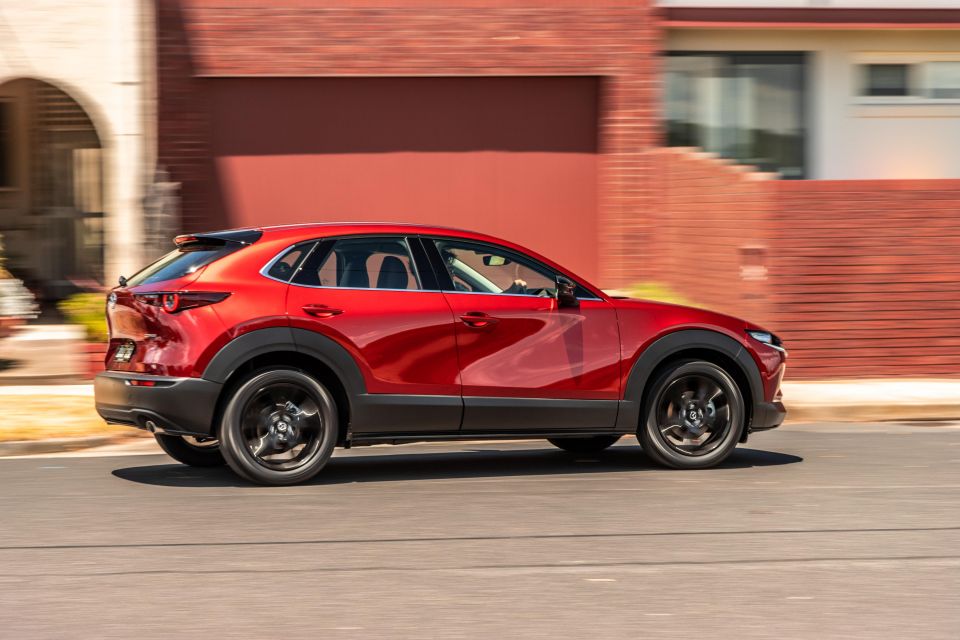
Mazda’s six-speed auto may be lacking in cogs compared to rivals with seven- or eight speeds (or CVTs), but the slushbox shifts intuitively and snappily, making the most out of the engine’s power and torque.
It’s fairly quick to kick down if you need to jump into gaps or fire into a roundabout, but occasionally it takes a moment too long and the lack of low-down urge means you need to be patient to get it going in a hurry.
The engine note is that signature high-pitched Mazda buzzy whine, but it sorta sounds like an MX-5. The G25 mill doesn’t need to be worked as hard as the G20, and therefore doesn’t get intrusive under load like its G20 stablemate.
Beyond the powertrain, the CX-30 G25 SP Touring behaves like every other variant we’ve tested so far.
Refinement is top-notch, with minimal road and wind noise entering the cabin even on rougher patches of blacktop. The CX-30 easily matches premium competition in this regard, often bettering them too.
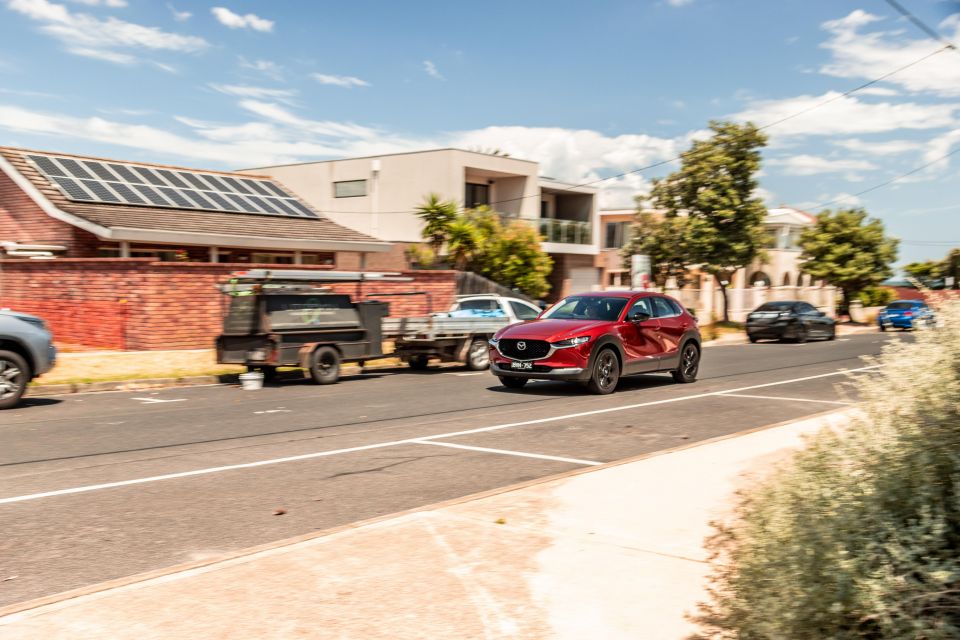
The steering is lovely, direct in response and fluid in operation. It strikes a great balance in terms of weight and ease-of-use, and I’ve previously said it’s very European in feel.
Body control and ride comfort offers a similar balance. It’s not overtly sporty, but the CX-30 can be a bit of fun up a winding road while also being pretty darn comfy in the bumpy CBD. Even with a torsion beam rear suspension setup and big 18-inch alloys, it’s surprisingly pliant.
In the bends there’s a natural and predictable level of body roll that works well with the responsive front end to make it engaging. Think of it as a four-seat, slightly jacked-up MX-5 in character.
Mazda’s suite of assistance systems do the job well too, and in G25 Touring SP trim you get the added benefit of the Vision Technology Package as standard.

Where expert car reviews meet expert car buying – CarExpert gives you trusted advice, personalised service and real savings on your next new car.
Cruising and Traffic Support is one of the better Level 2 semi-autonomous driving systems out there, feeling more natural and assisting in operation rather than intrusive or coercive. It’s almost Volkswagen Travel Assist good.
The adaptive cruise control can be a little conservative at times, though, and will often slow down if a vehicle enters your lane even if it’s well ahead of the set distance gap. Small complaint, but at least it doesn’t slam on the brakes like I’ve found with some other brands.
Blind-spot monitoring and rear cross-traffic alert are almost essential inclusions given the skinny glasshouse and thick C-pillar, and you have the added convenience of surround-view cameras and front parking sensors with the Vision Tech pack.
All told, the CX-30 continues to be one of the class benchmarks.

Like all Mazdas, the CX-30 is covered by a five-year, unlimited-kilometre warranty with five years of roadside assistance.
Maintenance is required every 12 months or 10,000 kilometres, whichever comes first.
For the CX-30 G25 FWD, the first five scheduled visits will cost $322, $367, $322, $367 and $322. On top of that, Mazda will charge $71 for brake fluid replacement every 20,000km or two years, while the cabin air filter costs $103 to replace which is due every 40,000km.
By comparison, a Toyota C-HR Koba Hybrid is $220 a pop with longer 15,000km intervals.
Fuel consumption, meanwhile, will typically be in the 8-9L/100km bracket (indicated) in mixed real-world conditions. It’s a little higher than some of the small-capacity turbocharged engines in rivals like the Skoda Kamiq and Volkswagen T-Roc, and is around twice as much as you’ll get from a C-HR Hybrid.
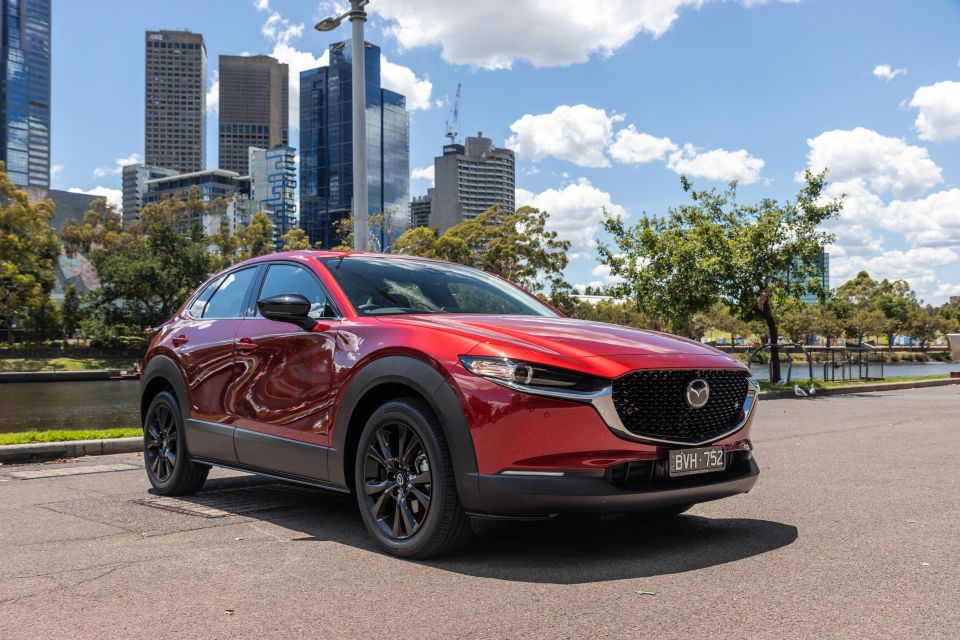
It’s easy to see why the CX-30 posted 47.9 per cent sales growth in 2021 – as rivals charged more, the Mazda’s value equation improved.
Supply and pricing factors aside, the Mazda CX-30 is fundamentally an excellent small SUV. It’s fun to drive, packs in desirable tech and convenience features, and it looks and feels like a much more expensive product.
Usually in the compact crossover class you can see where manufacturers have saved money or cut corners, but the Mazda really feels like an affordable luxury SUV.
At $40,000 the G25 Touring SP is getting up there in price, but it’s about the same money for a G25 Touring with the Vision Technology Package – and the 2.5-litre engine is almost a must with the CX-30.
If you like the red interior and black exterior accents, the CX-30 G25 Touring SP could well be the pick of the range.
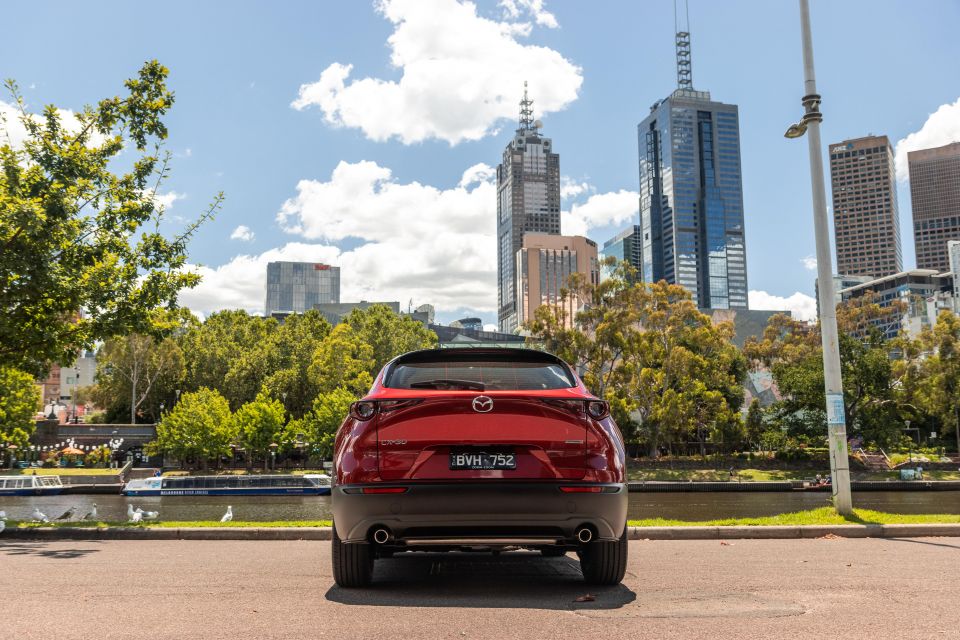
Click the images for the full gallery
MORE: Everything Mazda CX-30
Where expert car reviews meet expert car buying – CarExpert gives you trusted advice, personalised service and real savings on your next new car.
James is an automotive journalist based in Melbourne, Australia. Before joining CarExpert.com.au in 2020, James has worked at leading auto media outlets including Carsales and CarAdvice, as well as at Pulse agency for Ford Australia's communications team. In 2019 James made Mumbrella's 'Top 20 most prolific web authors in Australia' list after publishing 1,360 articles between March 1, 2018 and February 28, 2019 for CarAdvice. James is also an Ambassador for Drive Against Depression – an Australian charity whose mission is to support mental wellness through the freedom of driving and a shared love of cars.


Max Davies
5 Days Ago
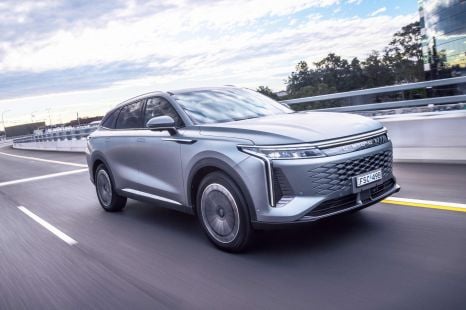

Damion Smy
4 Days Ago
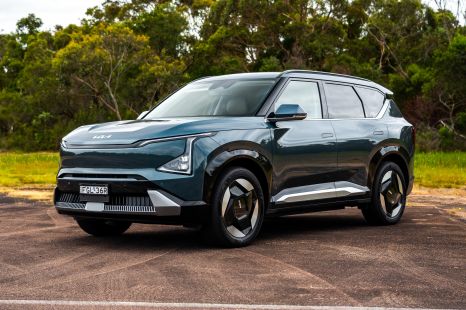

James Wong
3 Days Ago


Angus MacKenzie
2 Days Ago
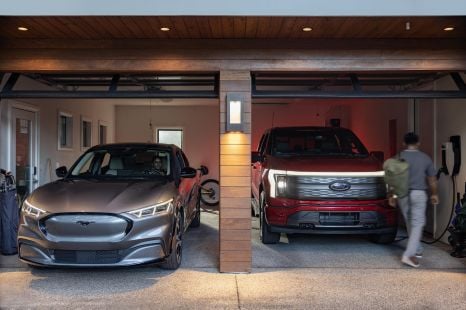

Damion Smy
16 Hours Ago
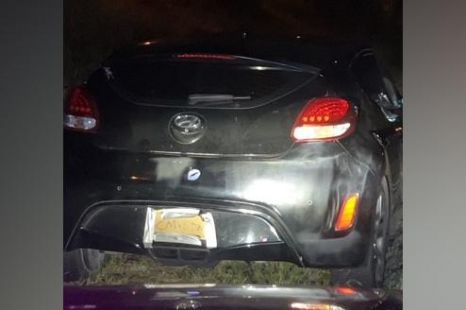

CarExpert.com.au
15 Hours Ago